How AMD CEO Lisa Su Plans To Keep The Pressure On Intel, Nvidia
In an extensive interview with CRN, AMD’s CEO talks about how the company plans to keep the heat on Intel and Nvidia, how the $35 billion Xilinx acquisition will make it more relevant in the data center and where the company stands with component supply and software support.
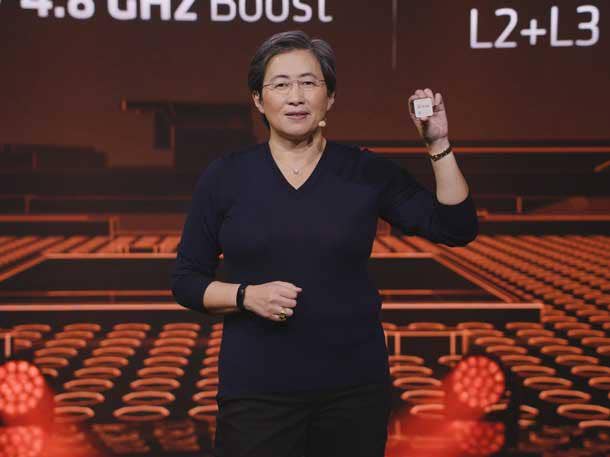
‘It’s About A Long-Term Partnership’
If you need a sign that AMD President and CEO Lisa Su is making waves in the semiconductor industry, consider this: The electrical engineer recently received the Robert N. Noyce Award from the Semiconductor Industry Association, named after the founding CEO of her top rival, Intel.
“I will say it is quite an honor,” she said. “You have to understand I grew up as a semiconductor geek, right? I’ve been in this industry for 25-plus years, and people like Robert Noyce are just icons in the industry. So I’ll say it’s quite humbling.”
[Related: Lisa Su’s Channel Awakening: Why Partners Could Be AMD’s ‘Largest Growth Opportunity’]
In an interview with CRN, Su addressed some top interests among solution providers as the company continues to grow: software support, CPU supply and AMD’s plan to acquire Xilinx. She also talked about the most important decisions she’s made as CEO, how the company plans to keep the pressure on Intel and Nvidia and what investments AMD is making in the channel.
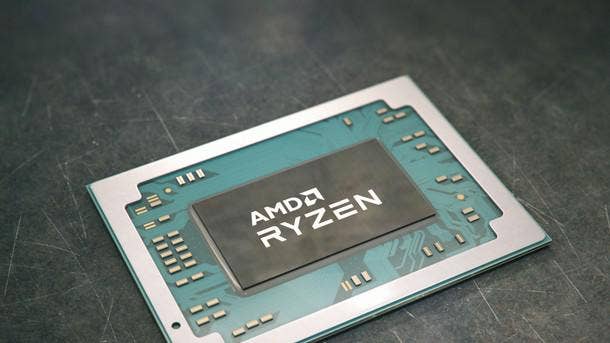
What would you say are the most important decisions you've made as CEO so far?
So I joined AMD in 2012, and then became CEO in 2014. The reason I joined AMD is because I felt like this was a company that could be very important in the industry. I’ve always believed that processors are the center of the universe. I’m slightly biased, but I do believe that processors are a very, very important piece of how do you move the industry forward. And AMD is one of the few that has the capability to lead in processors. Since becoming CEO, after spending a lot of time with our employees and our customers and industry folks, it became clear that we had to set out a vision of having a very consistent and executable road map going forward, and that’s especially important with customers because when they decide to partner with AMD, it’s about a long-term partnership, it’s about investing resources over multiple years. And what we needed to do was to make sure that they had the confidence in us, that we would give them leadership products generation after generation after generation. So that was really my focus. No. 1, let’s decide what we want to be when we grow up, which is the leader in high-performance computing. And then No. 2, make sure that we earn people’s trust, our customers’ trust, our partners’ trust, that we will deliver that year in, year out, and that’s been very much the mantra of the last five or six years.
AMD has claimed with its new Ryzen 5000 desktop processorsthat it has leadership performance for both single-threaded and multi-threaded workloads. Do you anticipate that AMD will be able to maintain the continuous performance gains it’s made in the past few years for the generations of processors to come, or do you expect that Intel eventually will be able to catch up?
Our goal was to have overall leadership in CPUs. So when we started the Zen road map, the development started actually back in the 2013 time frame, and we put out the first generation of Zen in 2017. And then just very recently, we did the third generation, so Zen 3. And our goal has always been leadership, and the view is we believe that it would take us several generations. So first, we had a big catch-up generation, which was Zen 1. And then we did focus on multi-threaded leadership. And then we did more optimizations in Zen 2. And Zen 3 is just a very, very big step forward for us, particularly in the single-threaded performance arena. What we would say is we do believe we have leadership in the industry today. We’re very, very excited about that. I think the Ryzen 5000 series are going to be great desktop processors for our desktop fans. That’s going to translate into our EPYC processor line soon. And then you’ll see it also come out in notebooks. And so I think we feel very good about where we are, and it’s our intention to maintain leadership. Obviously, it’s a very competitive world out there and we know that, but we also have lots of ideas beyond Zen 3 today that are deep in development already.
Software support and optimization is one area where some solution providers have remained hesitant about AMD. Can you help CRN readers understand the investments AMD is making in software?
This has been a big area of investment for us, both for CPUs and GPUs. Our desire is to offer a very competitive suite of tools as well as optimized application software that works on our technology. I think we’ve made great strides. We appreciate the partnerships across the industry to get that done. I think our compilers are much better, our tools are much better. The partnership with [companies] like VMware and others has really expanded [our capability to] provide that out-of-box experience that feels very easy to use. And that’s our focus. On the GPU side, there’s a lot of work going on in terms of libraries and also optimization on machine-learning frameworks like TensorFlow and others to also make the out-of-box experience with GPUs better. I would say that we have made great progress, and you should assume that we’re going to continue to invest in these areas and really ensure the customers who want to use our hardware have a very robust software ecosystem.
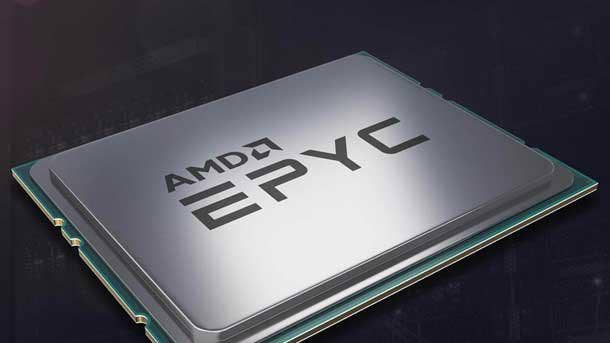
Another area of concern for solution providers is supply, especially given Intel’s CPU shortagesover the last couple of years. How has AMD’s supply situation been? And as AMD continues to grow, will the company be able to fulfill demand for its products?
2020 has been sort of an incredible year if you just look at it both from an industry standpoint and then from an AMD standpoint. From an industry standpoint, I think we’ve seen some areas of unprecedented demand. The PC market has never been stronger. Gaming is also very, very strong. And those have placed some, let’s call it, ‘strains’ on the supply chain. I would say from an AMD standpoint, we have significantly grown our shipments if you just look at PCs. We’ve probably grown over 50 percent year on year, so we’re very pleased with that. I think that’s the overlay of both the market being strong as well as AMD gaining market share, as we’ve now gained market share for 12 quarters in a row or so. And so the answer is yes, we’re ramping up our supply chain. I would say that demand still exceeds supply in certain parts of the supply chain, particularly education. We’re seeing that the education market has surprised us all a bit with just the strength, given all the school-from-home dynamics. But we’re continuing to increase our supply chain, and that becomes a big focus as we continue to grow. But I would say the growth that we’ve experienced in 2020 has been higher than we originally expected, and we’re working hard to meet our customers’ needs.
AMD hit a recent milestone with Google Cloud using the Secure Encrypted Virtualizationtechnology of AMD’s EPYC processors for the cloud service provider’s new Confidential Virtual Machines product. VMware also announced support for SEVrecently. How important do you think SEV and Secure Memory Encryption are to the future of the data center?
I think they’re quite important. Security has always been this underlying theme of, you must have a secure access to your compute, into your data. I think it’s just become table stakes for people using the cloud environments in particular because if you’re able to trust your computing to the cloud, you want to know that it’s very secure. So I do think it’s very important, both cloud and enterprise. We’ve continued to innovate in that area, and this is an area where partnership is very, very important, so we’re extremely pleased with the partnership with [Google Cloud] as well as a number of our other customers who are innovating in this area.
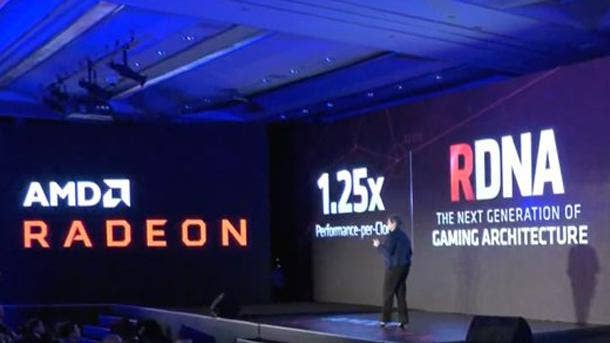
AMD has been playing catch-up in the GPU space with Nvidia, and the latest Radeon 6000 Series news shows that the company is starting to close the gap or exceed Nvidia on the desktop side in some cases. What is AMD doing to become a bigger data center and workstation GPU player, both from a technology perspective as well as a sales and enablement perspective?
Our aspirations in the GPU space are actually very similar to our aspirations in the CPU space around leadership. And as always, these things are journeys. So last year, we announced that we actually have two architectures that we’re developing on the GPU side. So, the gaming-focused one is called RDNA. And so, as you mentioned, we just recently announced the Radeon 6000 Series, which is [based on] RDNA 2. And we’re really proud of that. If you think about just gaming and some of the secular growth markets, gaming is a great market. We’re in the next-generation game consoles. We have these extremely capable, powerful Radeon 6000 graphics cards that will go into PCs, and then we’ll have a number of other products going as well. So that’s one leg of the stool. And then the other leg is an architecture that we call CDNA, which stands for Compute DNA. And that architecture is addressing more of your readership in terms of enterprise, high-performance compute, data center applications. And we’re very excited about that as well. Some of the examples that we’re quite proud of is, over the last year or so, we’ve announced two large supercomputing wins. One with [the U.S. Department of Energy’s] Oak Ridge National Labs, with the Frontier supercomputer, which is slated to deploy next year in 2021. That’ll be over one-and-a-half exaflops. And then the El Capitan supercomputer with [DOE’s] Lawrence Livermore National Labs that is slated to deploy early 2023. All of that is using our AMD EPYC CPU technology and our Instinct GPU technology. So I think the aspirations are there. I think we’tve made tremendous progress. The CDNA architecture is very specifically focused on compute, and so we’ve added a lot of compute capability and you’ll see us more broadly offered in enterprise and other offerings as well as that rolls out later this year into next year.
AMD has really started to catch on in the high-performance computing market, but what should players in the broader data center community take away from the chipmaker’s supercomputer wins?
What we’ve seen in the past is the technologies that make their way into the highest-performance supercomputers eventually make their way into sort of regular data centers—and that’s what we see. What makes these deployments so challenging is you’re trying to get the highest possible performance in what is a very power-constrained and, frankly, space-constrained environment. And so it really does come down to total cost of ownership, which is so important in everyone’s data center, whether you’re a cloud environment or you have a hybrid on-prem environment. What we’ve been able to do with our combination of EPYC and Instinct is to really optimize the components together. I’m a big believer in [the idea that] next-generation data centers are heterogeneous in how they look, and so you have CPUs, you’ll have GPUs, you’ll have FPGAs, and you’ll have some ASICs. And your ability to interconnect those and have them operate in the most efficient fashion is what’s going to make the difference. And so we focused a lot on that. And I believe that’s why we won those exascale deployments, and I think that technology is going to be very applicable in the enterprise data centers as well.
I met with two AMD executives at Supercomputing last year and they definitely were teasing this idea of how the AMD CPU plus AMD GPUtogether were going to become a bigger story going forward. We've started to see that play out with AMD’s SmartShift technology in laptops and with the Radeon 6000 graphics cards being able to improve memory capacity with AMD CPU chipsets. How big is that opportunity to get people to buy into the CPU and GPU ecosystem for AMD?
I think it’s definitely very large. The whole premise is, look, you can always have choice. You can always pair our CPUs with the competitor’s GPUs or our GPUs with the competitor’s CPUs. That’ll always be there. But when the two components are designed together, or I should say, they’re aware of each other, they’re just going to be more efficient, and I think that’s the key here: If we can drive just a little bit more efficiency, that translates into, at the same power, better performance, which everybody wants, or better total cost of ownership. And really what we’re trying to drive is there will be an extra advantage when the components know how each other sort of interplay, but they’ll always operate with other stand-alone components.
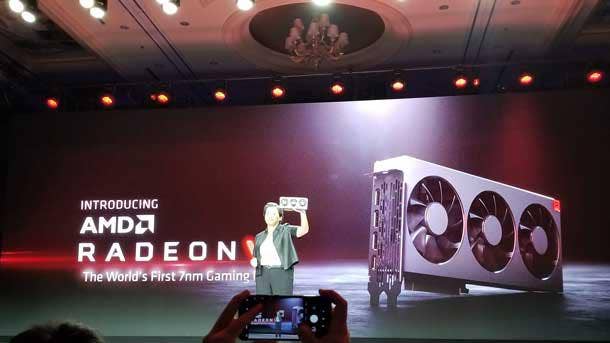
This might be a little too early to ask, but does AMD anticipate it will extend this story to FPGAs and ASICs once the Xilinx acquisition is closed?
We’re very excited about the acquisition of Xilinx. I think their technology is very complementary. We’ve already been doing work as stand-alone companies just ensuring that Xilinx FPGAs work really well with our EPYC CPUs. And I think we’ll have more opportunities to optimize them together as we go forward.
To what extent do you think that Xilinx’s products will become an important part of AMD’s data center offerings, and how broad of an opportunity will they be in the data center market?
We’re very excited about the acquisition of Xilinx. When we look at their product portfolio and the markets they’re in, we believe they add about $30 billion of addressable market to AMD’s addressable market, which was about $80 billion, so total, $110 billion of addressable market. In the data center in particular, I do think it’s very complementary to AMD’s efforts. Our focus has been on CPUs and GPUs, but I’ve always believed in a heterogeneous environment, and [Xilinx’s field programmable gate array] FPGA architecture adds sort of an adaptive capability. That’s really beneficial when algorithms are still not yet fully defined, and it allows for the ability to adapt in the data center market to new workloads. So I think it’s quite strategic. I think the Xilinx technology around SmartNICs is quite strategic as well as their network acceleration. Actually, since the [acquisition] announcement, I’ve gotten a number of inquiries from customers who are excited about what we can do together from a road map standpoint. I think it extends this notion [that] compute is very important, and you’re going to need compute in all different types of forms, and that’s what Xilinx brings for our portfolio.
Xilinx has its own SmartNIC technology, and this is an area that both Inteland Nvidiaare starting to focus on a lot. How important do you think SmartNICs are for the future of the data center, and how do you think that will drive opportunities for EPYC in the future?
I think it goes back to the broader point that the data center is becoming very heterogeneous, and you need all kinds of compute, depending on what workloads you’re trying to put together. I think our CPU and GPU portfolio is very strong, and we’re happy with the progress we’re making. I think adding Xilinx’s portfolio, including their SmartNIC, just gives us the ability to optimize more of the data center together and, frankly, work with our partners on what problems they’re trying to solve. So yes, I think it’s a great opportunity for us. At the end of the day, it’s all about getting the right mix of compute for each workload and working through that with the top customers and helping them shape what their data centers are going to look like in the future, so we’re excited about that.
We’re starting to see a growing prominence of alternative CPU architectures, namely Arm, but RISC-V is also starting to see some early traction. What is AMD’s plan to compete with processor vendors using Arm or RISC-V architectures in the future?
I would say Arm is a very good architecture. I’ve always believed that. Our goal is to be very competitive against any architecture. I think the way to think about it is, the processor market is pretty diverse and so, depending on the application that you’re going after, you may find cases where Arm is more suited, and there are many cases where x86 is more suited. I think the idea is for us to all be very clear about what we’re trying to accomplish. And in our case, it is trying to provide the highest-performance, general-purpose architecture. With our Zen product line, we’re certainly very competitive. I believe that we’ll continue to compete very well against the broad set of competitors.

AMD clearly views itself as having product leadership on multiple fronts, but the big question moving forward is can the company have sales and channel leadership too? What investments is AMD making to grow sales through channel partners over the next three years?
This is an incredibly important part of our business, and it’s the idea of really reaching a much broader swath of customers with our solutions. This has been a high focus for us over the last few years, and we’ll continue over the next few years. I think it’s working with our distribution partners as well as some of the channel resellers. And it’s also defining things perhaps in a bit of more channel-friendly-type packages, and so we’re definitely making those investments. I’m very happy with the partnerships with some of our top channel partners, like CDW and SHI and Insight, who are helping to broaden our reach to the next level of customers. We’ll continue to invest in the collateral and the training and the name recognition. So part of it is also making sure that people are familiar with AMD because we are perhaps not as familiar [among] some of these channel VARs, and we will continue to be very prominent in this area. So I think we have the technology to service the channel well, and now we’re certainly investing in the sales channels and the marketing to do that.
To what extent does AMD view OEMs as the primary channel focus versus solution providers, and is that changing at all?
I think it’s really both. On the OEM side, we’ve historically had excellent relationships with HPE and Dell, Supermicro, Lenovo. These are all top OEM partners for us. I think what’s true is that we’ve had a lot of success with support from Fortune 1000 companies as you look across all the top markets: financial services, oil and gas, education and those markets. It’s clear that there’s also, with the solution provider, an important go-to-market that’s a bit different than what we need for the large Fortune 1000 companies, and we recognize that, and that’s why we’re so excited about the market. I mean, I think we want to reach a broad cross-section of the market. We think the technology and the value that we bring is substantial. There you have thousands of people that you have to get familiar with AMD, and we know that requires just some time and some education.
When you restarted in the data center market a few years, I understand that had to start with the OEMs and the cloud service providers, which is why the channel has only started to come in focus more recently—is that right?
First-generation EPYC was launched in 2017, so it’s been three-plus years. And we did start with the cloud service providers, just because, again, they had a chance to adopt technology faster. And now if you look across the large cloud service providers—Microsoft Azure, Google Cloud, Amazon Web Services—they’re all users of AMD throughout their internal as well as external properties. OEM relationships are very good because you need to have the platforms, and so we spent quite a bit of time developing the platforms. And then, as I said, the Fortune 1000 sales. And very naturally, I think the channel is just a big opportunity for us. It’s really a matter of, as I said, ensuring that as we scale as a company, we put resources into the channel to support all of the activities there, and I’m very excited about the possibilities. I think it’s actually perhaps the largest growth opportunity for us. And we hope to earn the trust of all the channel customers.
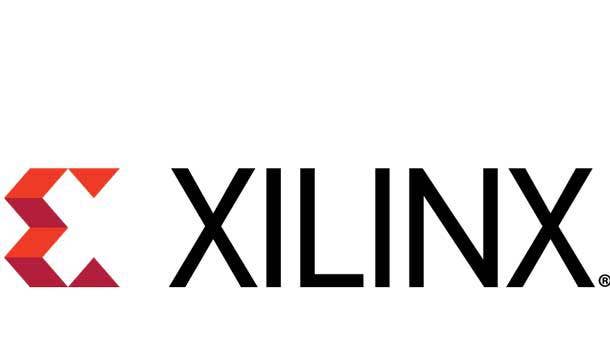
I've done a lot of reporting on Intel's partner programs over the last few years. I've also learned more about what Nvidia is doing on the partner program side. From my research and talking to partners, you definitely get a sense that they're both very comprehensive programs. And my sense is that AMD is definitely getting there, but it's not fully where it could be. Do you think that AMD will need to build a more comprehensive partner program to embrace the channel?
I think we’re growing by leaps and bounds in the channel. Now if you look historically, our larger relationships have been in the consumer channel, so sort of in the DIY space, across the world in the desktop as well as the graphics cards. And that’s now expanding to the commercial channel, both commercial PCs as well as more commercial server-type opportunities. I think it’s a large growth opportunity. We’ll continue to invest in that area, our partner program. Our virtual partner event [this year] had over 2,500 attendees. We’re scaling that by leaps and bounds every year. And so yes, I think our goal is to build out that partner program and [I] agree that on the commercial side, we’re less known today, but hopefully as people see the strength of the product and the strength of the portfolio, we’ll be able to grow those programs quite quickly over the next few years.
Are there any big changes coming to AMD’s channel strategy?
I think there are changes in terms of just more investments. As we look at these things, there are inflection points in terms of where we focus, and the portfolio is just so strong right now. When we look at the platforms that we have on the PC side, it’s the broadest set of commercial PC platforms we’ve ever had. [I’m] very, very excited about what we’re doing around Ryzen 4000 on the notebook side and then some new platforms to launch. And similarly, on the server side, as we launch our next-generation [EPYC] Milan platforms, you’ll see the broadest set of platforms. So the time is now to invest because the platform coverage is so strong.
One thing I've talked to partners about is the Xilinx acquisition. I think there is maybe a little bit of a concern that the acquisition will distract AMD from the current focus that has allowed the company to succeed in the last few years. And so my question is, what will you do to ensure that AMD can stay on its current path, while also investing resources in important areas like the partner program?
I actually don’t worry about that much. I think we’ve built a very strong execution engine for the past six years. We’re absolutely committed to our road maps and to our customers, and that’s not going to change. Frankly, what Xilinx brings actually makes us stronger. It’ll make us stronger from an R&D standpoint and stronger from a general portfolio standpoint because there are a lot of commercial markets that they have presence in [where] we actually don’t have presence today. They actually have a pretty strong channel business of their own. So I don’t see that it will in any way change what we do. If anything, my hope is that it will accelerate our relevance to a broad customer set with just the breadth of the portfolio.